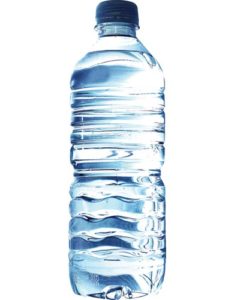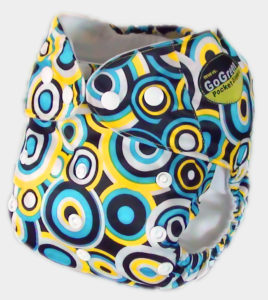Today, many of our efforts to use and consume less start with a goal of saving money. But whatever your initial reason for trying to do more with less, you’ve probably come to realize that frugality and conservation are joined at the hip. Frugality as a money choice means that you try to get the longest possible use out of your possessions, use fewer resources, and throw away less money on consumable products. So how can you “kill two birds with one stone” and help both your budget and the environment? Start by reducing usage on two of the most environmentally “unfriendly” items filling up our landfills.
 1–Plastic water bottles.
1–Plastic water bottles.
If you are spending $4 every week on a case of bottled water, it adds up to $208 per year for a product you can pretty much get for free from your faucet. If you have really bad drinking water (like Flint, MI), then bottled water makes sense. Realize, though, that most bottled water comes from some municipality with a water treatment plant just like your hometown.
According to the Container Recycling Institute, 86% of plastic water bottles used in the US become garbage that ends up in landfills throughout the country. Do the math. Approximately 60 million plastic water bottles are used every day in the US, so nearly 18,834,000,000 (yes, that’s billions) end up in the landfill every year. Each bottle can take up to 700 years to decompose.
2–Disposable diapers.
Brace yourself. I’m going to bring up the “D” word, as in disposable diapers. If you are reading this right now and you are the parent of a child in diapers, I am only asking that you keep an open mind. When you go to the store every week and spend $20-30 per week on diapers, your brain doesn’t keep a running tally of how much you’ve spent on diapers to date. But the total cost of diapering a child from birth thru toilet training ranges from $2000-$3000.
Disposable diapers have become so commonplace that many young parents don’t realize they have another option. In reality, there is still a choice when it comes to diapering and you may want to consider cloth diapers for both economic and environmental reasons.
Disposable diapers not only cost parents a lot of money, they also cost the environment. Approximately 27.4 billion disposable diapers are used, and thrown away, in this country every year. Recent estimates place the range from 400-500 years to break down a diaper in a landfill.
However, estimates for one child using cloth diapers, including initial purchase and laundry costs for 2-3 years, average about $300 per child. They can then be reused for just the cost of laundering with any successive children. Newer version cloth diapers have snaps or velcro fasteners with a waterproof outer cover, and are very user-friendly.
Need more motivation? Studies show that diaper rash has increased from 7% (cloth) to 61% (disposables). Reasons for rash include allergic reactions to the chemicals in the diaper, lack of air circulation, and/or to babies being changed less often because they feel dry even when they are wet.
How can you save money and the planet?
The Ohio EPA and your local solid waste management district are responsible for implementing statewide waste reduction, recycling, recycling market development and litter prevention programs. An important part of this duty is implementing Ohio’s Solid Waste Management Plan and encouraging Ohioans to reduce waste, recycle materials and buy recycled-content products. Check out the following infographic(PDF) to view statistics about recycling and to ascertain tips about how you can help.


